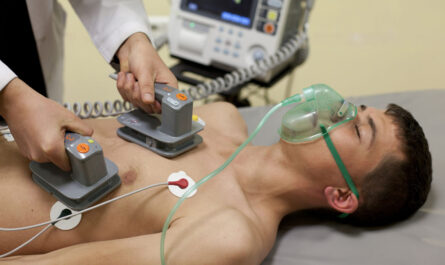Causes and Risk Factors of Chagas Disease
Chagas disease, also known as American trypanosomiasis, is caused by the protozoan parasite Trypanosoma cruzi. The parasite is mainly transmitted by triatomine insects, otherwise known as “kissing bugs,” which pass the parasite in their feces after biting a person. When the person scratches the area where they were bitten, the feces enter through the broken skin or mucous membranes. The parasite can also be transmitted through blood transfusions, organ transplants, and from mother to baby during pregnancy or childbirth.
People living in poverty-stricken rural areas of Latin America are most at risk since that is where the triatomine insects often live. Substandard housing with cracks and holes in the walls allows the insects to enter homes. Activities like sleeping outdoors also increase exposure. While usually not found in the United States, globalization and increased migration have led to small localized outbreaks in some southern states.
Acute and Chronic Stages of Chagas Disease
Once inside the human body, T. cruzi parasites invade and multiply within cells. In the initial acute phase, which usually lasts 2-4 months, symptoms may include fever, fatigue, body aches, rash, swollen lymph nodes, and loss of appetite. However, up to 80% of acute cases do not show any symptoms. Chagas Disease Treatment left untreated in the acute stage, the infection moves into the chronic stage.
In the chronic phase, which can last decades, 60-70% of infected individuals will remain asymptomatic with no apparent damage to tissues and organs. However, 30-40% will go on to develop potentially life-threatening complications as the parasite damages heart muscle, intestinal tissues, and neurological systems years later. Heart abnormalities like enlarged heart and heart failure are the most common forms of chronic Chagas disease.
Diagnosis and Available Chagas Disease Treatment
Several methods exist to diagnose T. cruzi infection. Since the parasite is difficult to detect during the acute phase, diagnosis relies more on clinical symptoms and exposure history. In the chronic phase, serological tests to detect antibodies against the parasite in blood are used. Imaging tests may also show abnormalities in affected organs over time.
Currently, two drug treatments are available to fight Chagas disease— benznidazole and nifurtimox. Both are taken orally for 60 days. These trypanocidal drugs work best when given during the acute phase of infection, killing the actively dividing parasites. In chronic Chagas cardiomyopathy, treatment is still recommended since it may prevent further progression of disease symptoms even if complete cure is not achieved.
However, these existing drug regimens have limitations like severe side effects in up to 40% of patients. Additionally, treatment success rates depend on the parasite strain. Monitoring is required during therapy and follow-up testing ensures cure. For those diagnosed in the chronic phase, treatment does not repair damage to tissues already affected. Heart medications or pacemakers/defibrillators may still be needed later on if heart disease complications develop despite treatment.
Research on More Effective Chagas Disease Treatment
Given the challenges with current drugs, researchers continue looking for safer, shorter, and more effective options to treat both acute and chronic Chagas disease. Focus areas include developing new compounds, repurposing existing drugs, and improving drug delivery methods. Some promising recent developments include:
– Fexinidazole — A nitroimidazole antibiotic already used for other parasitic infections. Clinical trials showed excellent cure rates when used to treat Chagas disease as well, with milder side effects. It has been submitted for approval.
– E1224 — An oral nitroheterocyclic compound that in animal studies cleared circulating parasites faster and more effectively than benznidazole. Phase 2 human trials are ongoing.
– Raptor Pharmaceutical’s drug — Showed cure in animal studies when combined with the existing drugs nifurtimox or benznidazole. This may allow lower doses and shorter treatment duration. A phase 1 trial in humans has been completed.
– Repurposing azoles — Drugs originally used as antifungals demonstrated trypanocidal activity against T. cruzi in lab tests. Further studies are exploring their potential as Chagas treatments.
Prevention is Key
While new treatment options are actively explored, prevention remains an important strategy to curb chagas disease treatment worldwide. Vector control programs target triatomine bugs in homes using insecticides. Screening blood and organ donors, as well as pregnant women in endemic areas, helps reduce transmission that way. Raising awareness on avoiding bug bites, improving sanitation infrastructure, and screening family members of infected individuals are other prevention methods employed. Overall, a multipronged approach combining diagnosis, treatment, surveillance and community participation is key to controlling this neglected tropical disease.




